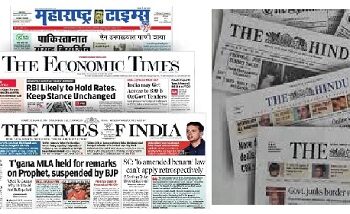The media frenzy about the last full budget of NDA-2 dying down, it is time to have a hard look at the fine print and what it means to the Indians and the New India. The first post—GST budget by the Finance Minister, Shri. Arun Jaitley, his fifth in a row has seen a shift in approach both by the Government and by the Media who celebrates this annual financial document presented in the Parliament termed as Union Budget.
The proposals put forward by the FM can certainly be termed as a drift from a pro-business perspective towards sectors which demanded serious and compelling focus — the hard areas of Indian Economy — that deserved a boost. We should hope that the focus area initaties bears fruits which will drive the Indian Economy to a point of strength and also an impetus to the Government to go ahead with its reforms push.
The Three Ps – Produce, Process and Prosper is the mantra that emanated from the budget speech. The narrative is certainly what Indians need. The intend brave. The Task, Herculean! The analysists thought that the earlier budgets of the present Government was nothing but a continuance of the old and if not stale policies, and a routine one too. The expectations with which the Government assumed charge did not reflect in the past ones by Shri. Jaitley. The Prime Ministers talk about Farmers Welfare, Rural Development, Make in India, Swachh Bharat, Skill India, and so on was never reflected but the 2018—19 Budget gives a feeling of hitting the right chord in those lines.
The intend is not to do a hair split on the proposals, but to give the reader a general idea as to what the all-round scenario is. India accounts for about 17.50% of the World Population and 20% of the Youth Population. The Demographic Dividend for India is there to take, the major reason for the World to look at India as a world’s leading economy. There is reason to cheer, but what about 30.80% of our youth who are classified as NEET Not in Employment, Education or Training. This is the focus area which weighed India down in the Inclusive Development Index brought out by World Economic Forum. The comparison with our neighbour in this newer method of assessing countries may not be right in absolute terms, but Pakistan is certainly much ahead of India in this regard. Did we give that focus to the generation who would have added to the Gross Domestic Product rather than being a burden on the economy.
This budget with its focus on Agri Business (not just agriculture) is a move in the right direction. The proposal to give 1.5 times the production cost as Minimum Support Price can be a serious intervention by the Government and that too by using a direct benefit transfer mechanism can give a huge fillip to the rural India. In India, a bumper crop can be a curse for the farmers as the supply going up will pull the prices down. A production cost linked pricing will certainly make the farmers a happier lot. Apart from this, the entire food sector will gather momentum and the zero-hunger target should be an achievable one. Job creation, for sure.
The infrastructure is what hit the farmers. The produce to be transported, warehoused, processed and consumed did pose a huge challenge. A consumer state like Kerala which produces only food grains to sustain its population for just about 30 days has been a victim of the high price of food grains during non-harvest season. An improved investment and spending on the Road Transport infrastructure should hugely benefit States like Kerala, if the State seizes this opportunity and invests wisely in sourcing and warehousing, and also in processing.
The major area that will have an impact is the ‘NaMoCare’ — the health insurance scheme which is to benefit about 50 Crore Indians. Health is certainly a wealth not only for that individual, but also for the Nation. There has been raised eyebrows about this ambitions scheme announced in the budget and criticism of not providing for adequate amounts, etc., the very thought is certainly laudable Personally, I would have loved to have a specific initiative focussed on preventive health and health awareness. Yoga certainly!
The initiatives for furtherance of the development agenda looks great as it focuses on improving the quality of life in about 115 selected districts by investing in social services like health, education, nutrition, skill upgradation, financial inclusion and infrastructure.
In the yester years, more ink would have been spent on the direct and indirect tax proposals in the budget. The celebrations would have been for a tax exempiton limit hike or a new deduction. The literate India is now forced to look at the sectors which he seldom gave much importance. A go — by to the paltry population who pays tax can be pardoned as the FM may not have had enough time and resources to reward them with some.
This time, there were no charts and graphs for the rise in prices in the February 2nd Newspapers. However, I would like to give a word of caution to the tax payers about the proposal to deny the reliefs. The “landmine clause” as proposed is as follows “It is proposed to substitute the said section so as to provide that in computing the total income of an assessee of the previous year relevant to the assessment year commencing on or after the 1st day of April, 2018, deduction under any other provisions of Chapter VIA under the heading “C. – Deductions in respect of certain incomes” shall be allowed only if the return is filed within the due date specified under sub-section (1) of section 139. This amendment will take effect from 1st April, 2018, and will, accordingly, apply in relation to the assessment year 2018-2019 and subsequent years.”


Compliance is the Keyword! Writer is a leading Chartered Accountant and can be contacted at ranjitkarthikeyan@gmail.com















